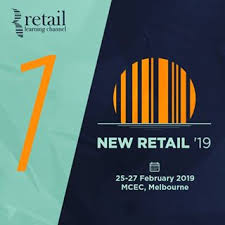I attended yesterday, the New Retail ’19 which is Australia’s largest retail gathering. It brought together over 2500 retail leaders and learners for a three immersive day to explore omnichannel retail, fulfilment strategy and partnerships. Some of the stuff was an eye-opener, and it is going to take me a while to digest much of it.

The first point I wish to discuss is the margins required for e-commerce with some real data supplied at the show. I will explain it point by point to give you a professional appreciation of how these people think plus give you a feel of how it works and what sort of product you require.
What happened was a company decided to advertise a product using keywords in Google advertising. These are the advertisements that you see on the top, left and bottom of the screen when you look up something up in google. So they put in an advertisement into Google. This is the result
| Raw figures | Calculated figures | |
| Metric | ||
| Impressions | 2,165,947 | |
| Clicks | 161,756 | |
| Click through rate (CTR) | 7.47% | |
| Cost per click (CPC) | $0.35 | |
| Marketing costs | $56,752.24 | |
| Orders | 4,303 | |
| Revenue | $295,322.70 | |
| Effective revenue share (ERS) | 19.17% |
They entered the raw figures, and they derived the calculated values.
Impressions: This is the number of times that the advertisement was shown. In this case, it was shown over 2 million times.
Clicks: Is the number of times that someone went to the advertisement.
Click-through rate (CTR): This is the percentage of how many times the advertisement is clicked compared to how many times it is shown. This is very important as if it is low, then Google shows your advertisement less, so even if you are prepared to pay, Google will not show it. What Google says is that your advertisement is less relevant to their users' requests, so they will give their users more relevant information.
Cost per click (CPC): This is how much this person pays every time someone clicks the advertisement.
Marketing costs: Is the amount that was paid for the advertisement.
Orders: This is the number of orders the company got
Revenue: This is how much the orders added up to, I am not sure if this includes shipping costs and other products that they sold.
Effective revenue share (ERS): This is the line I wanted to get to. It is the cost of the advertising divided by revenue. In this case, it was 19.17%.
The point here is that this particular item, putting aside all other costs, requires 19.17% of the revenue to pay for the Google advertisement. That does not include many other costs, e.g., website, storage, etc. You need to pick your product.


